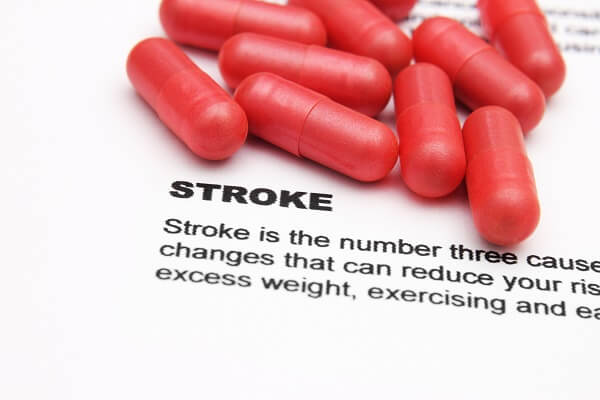
Free Consultation(203) 447-0000

Free Consultation(203) 447-0000

A stroke is a form of brain attack. It can happen to anyone at any age and at any time in their life.
However, when this “attack” occurs, the brain reduces blood flow and mostly loses oxygen. It results in severe deprivation for those brain cells, and those cells then begin to die as a result. Once the brain cells die, the abilities the brain controls from that area are significantly damaged or lost entirely.
A person’s recovery rate and the overall effects of a stroke depend on how severe the stroke is, the number of brain cells damaged, and where in the brain it occurred.
Most stroke victims do suffer from complications and injuries, but when the stroke itself is misdiagnosed, the injuries are often more severe than they would have been if the physician diagnosed a stroke correctly.
Permanent damage after a stroke occurs because of brain cell death. Three types of strokes lead to brain cell death:
Certain risk factors increase a person’s likelihood of experiencing a stroke, such as high blood pressure. Other risk factors include:
Most cases for misdiagnosis of a stroke occur because the appropriate diagnostic procedure is ignored. The stroke is an abrupt interruption of blood to the brain. Timing in these cases is critical. If a patient is properly diagnosed, he or she can receive treatment. However, diagnostic errors and failure to treat promptly means that brain cells are deprived of blood flow and oxygen, which means more cells die.
Physicians and health care providers are trained to look out for the symptoms of a stroke, and they are required to respond quickly to prevent further brain cell death or damage.
Some signs health care providers know to look for include:
Any doctor that suspects a stroke should order a CT scan of the brain or an MRI to rule out the possibility of a stroke. These imaging scans reveal of the patient has had a stroke or is currently suffering from one. Also, these scans tell a physician the type of stroke the patient suffers.
Additional tests help them determine the cause of the stroke, so that they not only treat the attack, but the underlying cause.
It is critical that an emergency room physician not only identify if a patient is having a stroke but the type of stroke. Determining the type quickly ensures the proper treatment is used to prevent further damage. The medication used for one type is not the same as the medication for the other. Using the improper medication could worsen the symptoms.
A doctor could misdiagnose a patient who is suffering stroke-like symptoms even after imaging scans. These misdiagnoses can result in failing to determine the type of stroke, diagnosing a stroke as another kind of illness, or failing to treat with the proper medication.
Certain illnesses mimic the symptoms of a stroke; therefore, a busy physician might ignore the likelihood of a stroke and misdiagnose a patient with another condition.
The fastest and most efficient way to tell if a patient has had a stroke is by conducting an imaging scan. The CT Scan and MRI are the most accurate, but these images are not always conclusive. Therefore, physicians must rely on their knowledge, experience, and other diagnostic procedures to rule out a stroke.
Not all instances of stroke misdiagnoses are malpractice. When a doctor is assessing a patient that presents with a health condition, he or she must conduct the differential diagnosis.
This is a process where possible conditions are considered and ruled out with a series of tests. Once each test rules out a condition, the doctor narrows down the list until they arrive at the most likely diagnosis.
The differential diagnostics process varies depending on the doctor, but all doctors are expected to follow standard protocol and rule out conditions before treatment or prescribing any medications to the patient. If the physician fails to diagnose because he or she ignored testing requirements or failed to review those tests, they are negligent.
To hold a doctor liable for his or her error, the patient must hire an attorney. Then, the attorney will show how the doctor strayed from the acceptable standard of care in his diagnostic procedure. Often this is done with the assistance of medical experts.
It is important that you work with a law firm with substantial knowledge and expertise in malpractice cases. This is because malpractice litigation is not the same as personal injury litigation. There are specific procedures, laws, and issues to address in these types of cases.
Our attorneys represent victims of medical negligence. We focus heavily on malpractice claims, and while we know that does not make us better than every attorney out there, it does give us an advantage.
Our attorneys are immersed in every aspect of medical litigation, and we know the trends, spot new ones as they develop, and pioneer legal strategies to help our clients the best we can.
Our attorneys are here to assist you with your case. We routinely represent clients who suffered a stroke and receive incorrect diagnosis or treatment. We understand what you and your loved ones are going through and we are here to help you receive compensation for your injuries.
As a client of our law firm, we help you obtain justice, and we are honored that you would select our team for your needs.
A clear majority of our clients contact us reluctantly. They do not want to file for monetary gain, but they have compounding costs after a misdiagnosis. We understand what you are going through and we will help you receive the compensation you need.
Our team determines what compensation your case qualifies for, including lost wages, medical expenses, pain and suffering, and future lost income.
Contact Berkowitz and Hanna, LLC today to schedule your consultation. Call 866-479-7909 or contact us online to get started.
Berkowitz Hanna
